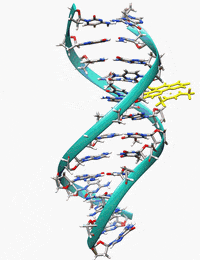
Why is antibiotic resistance (ABR) research important?
The discovery and production of antibiotics in the first half of the 20th century dramatically reduced the impact of bacterial infections on human health. With frequent overuse of antibiotics over time, bacteria can change in a way that reduces the effectiveness of the agents that are designed to prevent infections. In farm animals, this can lead to antibiotic-resistance genes entering the food chain.
The process for development of resistant bacteria is as follows:
- Upon exposure to antibiotics, the majority of the bacteria sensitive to it will die, with a small portion surviving.
- The surviving antibiotic-resistant bacteria multiply through repeated exposure to antibiotics and gain a greater share of the overall microbial population.
- This resistance further spreads to sensitive human populations through horizontal gene transfer of antibiotic resistance genes.
Antibiotic resistance TaqMan Assays
Target Gene Name | Description |
APX1 | Control |
OXA-1 | β-lactamase (class D) |
FOX | AmpC β-lactamase (Class C) |
GES | Carbapenemase (Class A) |
KPC | Carbapenemase (Class A) |
IMP-1 | Carbapenemase (Class B) |
NDM-1 (C) | Carbapenemase (Class B) |
blaOXA-48 | Carbapenemase (Class D) |
PER-1 | Extended Spectrum β-lactamase (Class A) |
VEB | Extended Spectrum β-lactamase (Class A) |
CTX-M Group 1 | Extended-Spectrum-β-Lactamase |
CTX-M Group 2 | Extended-Spectrum-β-Lactamase |
CTX-M Group 8/25 | Extended-Spectrum-β-Lactamase |
CTX-M Group 9 | Extended-Spectrum-β-Lactamase |
ermB | Macrolide Resistance |
qnrA | Quinolone Resistance |
qnrS | Quinolone Resistance |
VIM | verona integron-encoded metallo-β-lactamase |
